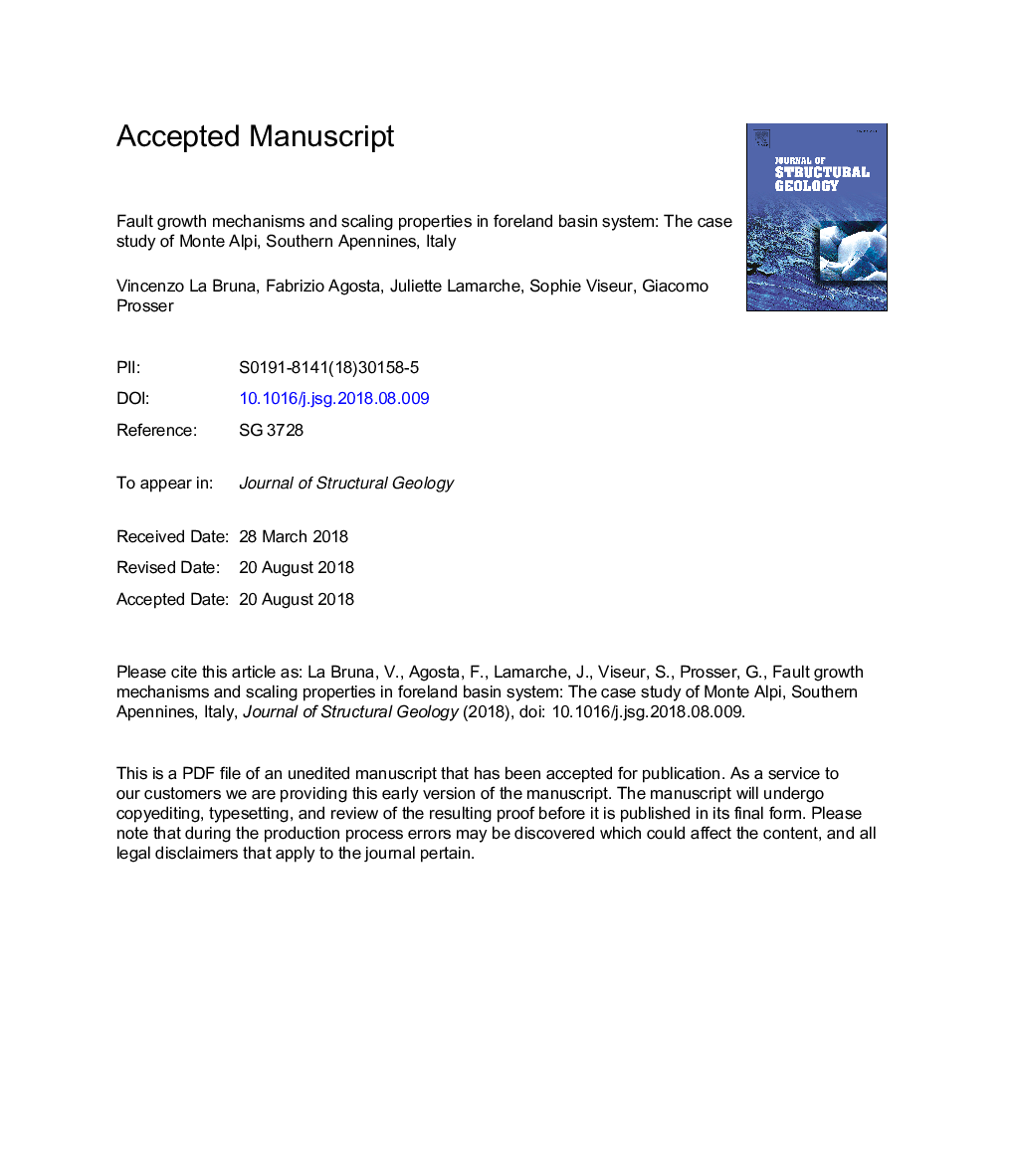| Article ID | Journal | Published Year | Pages | File Type |
|---|---|---|---|---|
| 10130536 | Journal of Structural Geology | 2018 | 61 Pages |
Abstract
The present work focuses on the comprehension of the growth mechanisms and dimensional properties of the pre-Pliocene Monte Alpi fault network by mean of integrated field and laboratory analyses. After this multidisciplinary approach, detailed throw profiles are computed for each fault belonging to the Monte Alpi network. Subsequently, the dimensional properties of the individual faults are calculated. Data obtained from this work are discussed in terms of fault growth mechanisms and timing of deformation, and reported in a conceptual tectonic evolution model of the Messinian foreland basin system. Data suggest that originally isolated fault segments developed during the earliest stages of foreland basin formation by re-activation of a pre-existing, Early Cretaceous fault set, and formation of an orthogonal one. These two fault sets formed a scale-independent network. Differently, the same fault sets were also active during its subsequent development forming a scale-dependent fault network characterized by T- and Y-shaped fault intersections. This deformation controlled the half-graben depocenters evolution filled by up to ca. 600 meters of terrigenous deposits during the Late Messinian time.
Keywords
Related Topics
Physical Sciences and Engineering
Earth and Planetary Sciences
Geology
Authors
Vincenzo La Bruna, Fabrizio Agosta, Juliette Lamarche, Sophie Viseur, Giacomo Prosser,
